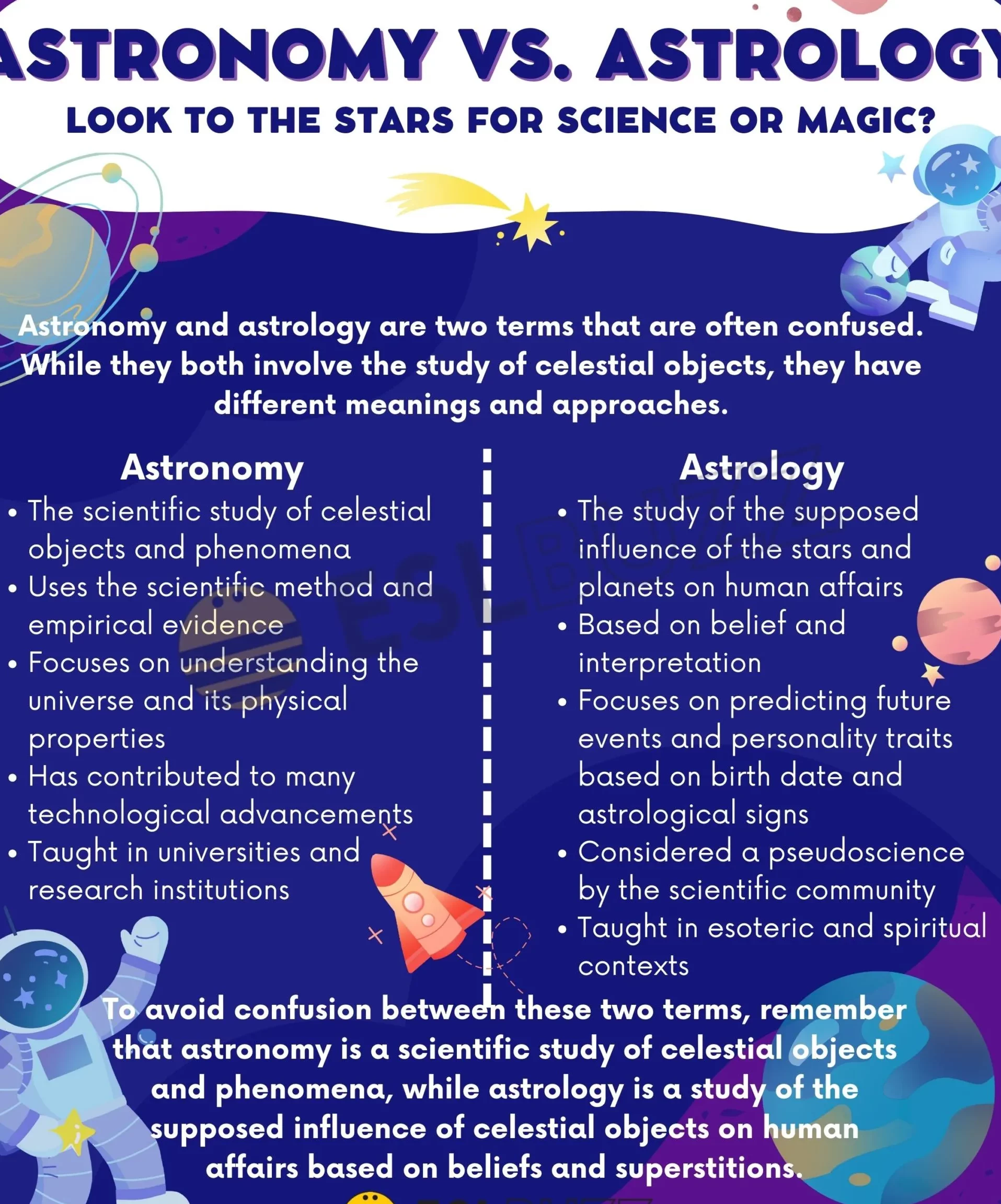Astronomy, derived from the Greek words “astron” meaning star and “nomos” meaning law, is a scientific discipline that investigates the structure and evolution of celestial bodies, the systems they comprise, and the universe as a whole.
The field of astronomy has significantly contributed to our comprehension of the scientific worldview and the formation of humanity’s understanding of the world, particularly in its current stage of development. Astronomers examine the fundamental physical properties, composition, origin, and development of objects and systems situated in space, as well as the cosmic processes and phenomena that capture their attention.
Throughout the progression of scientific understanding, various models of the Universe have been formulated based on astronomical knowledge. These models have been shaped by theoretical concepts that correspond to specific periods of scientific advancement:
Caution! If the instructor discovers plagiarism in your work, you will face serious consequences (possibly even expulsion). If you are unable to write it yourself, you can place an order here.
- mechanical;
- electrodynamic;
- quantum-field;
- quantum-relativistic;
- modern quantum-cosmological.
During a specific time period, the majority of people’s worldview is heavily influenced by the advancements in the field of astronomy. This scientific discipline shapes the fundamental ideas and unique perspectives of scientists. In modern times, astronomy is both an experimental and evolutionary science, encompassing both particles and waves.
Astronomers study cosmic objects across different ranges of radiation, employing spectral analysis to understand their evolutionary processes and interconnections. In the present day, scientists utilize advanced astronautics technology to directly observe and investigate objects, processes, and phenomena in space.
The primary accomplishments of contemporary astronomy include:
- Examining the overall dynamics of galaxies, uncovering the activity of galaxy nuclei, and elucidating the structural composition of spiral galaxies;
- Elucidating the evolutionary process of stars through modeling and validation through observational findings;
- Gaining insights into the structure of the Metagalaxy and the processes occurring in the Universe up to 10 billion years from the present;
- Providing evidence in support of the theory of star and planetary system formation from gas-dust complexes, and confirming the theory of a non-static Universe;
- Acquiring extensive information about the nature of the Sun and the planetary bodies of the Solar System, as well as their characteristics, through space exploration.
The ongoing scientific and technological revolution persists, leading to a growth in the realm of astronomical understanding and bolstering its significance. Novel branches of astronomy are emerging. Revolutionary techniques and scientific tools, forged in the current phase of astronomical progress, are enhancing the precision and efficacy of observations, broadening the scope of their potential. Furthermore, the practical importance of astronomical research is on the rise. It serves as a catalyst for the advancement of natural sciences, encompassing fields such as chemistry and physics, and contributes to the enhancement of energy and technology.
Human civilization in the modern era is becoming more and more susceptible to the impacts of cosmic factors. The resolution of environmental issues is predicated on the astronomical observations of planet Earth and the surrounding space. The advancement of astronomy and space science in the future will serve to mobilize resources and harness the potential of space in order to surmount the impending environmental and energy crisis. These means will prove to be a highly effective aid in ensuring the survival of humanity in the twenty-first century. Scientists are currently working on the development of orbital solar power plants and reflectors, as well as systems for extracting and transporting fuel for thermonuclear installations from the Moon. Additionally, efforts are being made to remove highly active industrial waste from our planet and extract valuable minerals from asteroids that have been transformed into satellites of the Earth.
The fundamental aspects of astronomy incorporate astrometry. Astrometry is the exploration of time and space.
Astrometry is comprised of the subsequent divisions:
- Spherical astrometry focuses on the development of mathematical techniques for ascertaining the location of celestial entities and their movements using various coordinate systems. This field also investigates the patterns that illustrate the alterations in the coordinates of celestial entities over time.
- Fundamental astrometry is aimed at determining the coordinates of celestial entities through research, creating catalogs of stellar positions, and calculating the values of astronomical constants.
- Applied astrometry Astrometry focuses on creating techniques to calculate geographical coordinates, azimuth directions, precise timing, and elucidating the tools employed in this process.
Theoretical astronomy is a field of study within astronomy that specializes in developing methods to ascertain the paths of celestial bodies based on their apparent positions, as well as determining the ephemerides of celestial objects using known elements of their orbits.
Celestial mechanics is a branch of astronomy that investigates the laws of motion governing celestial objects under the influence of universal gravitational forces, determining the mass, shape, and stability of celestial bodies and systems.
The aforementioned sections represent the primary divisions, each pertaining to the field of classical astronomy.
- Astrophysics – serves as the largest branch within the realm of astronomy, encompassing the scientific investigation of physical phenomena in the cosmos. It specializes in the examination of the configuration, physical properties, and chemical composition of celestial bodies.
- Stellar astronomy – delves into the principles governing the distribution and motion of stellar systems in space, based on their distinct physical characteristics.
- Cosmogony – concerns itself with the origin of life and the evolution of celestial bodies, including our very own Earth.
- Cosmology – explores the overarching patterns and developmental processes that shape the structure of the universe.
What are the techniques used to investigate celestial objects?
There are various methods utilized in the field of astronomy to conduct research. These methods can be categorized into the following groups:
Astronomical observations
Astronomical observations serve as the primary means of studying celestial bodies and events. These observations can be done either with the unaided eye or with the assistance of optical instruments such as telescopes equipped with different radiation receivers (spectrographs, photometers, etc.), astrographs, and specialized tools (such as binoculars).
Scientists use astronomical observations to record events happening in both close and distant parts of space. This method is the primary way to gather experimental knowledge. Astronomical observations are typically conducted in specialized research institutions known as astronomical observatories.
The Pulkovo Observatory near St. Petersburg is the first observatory in Russia. It played a crucial role in accurately cataloging stars. In the late 19th century, the observatory was unofficially known as the “astronomical capital of the world”. In 1884, it was a contender for the prime meridian, but Greenwich ultimately won the title.
Unique features of astronomical observations:
- The significant duration of observations accounts for their extensive lead times. Active influence on celestial objects is generally impossible, except for certain exceptions in manned and unmanned space exploration. Many phenomena are tracked over several thousand years, such as the variation in our planet’s axial tilt relative to its orbital plane. As a result, the astronomical knowledge passed down from ancient civilizations like Babylon and China still holds relevance today, despite some discrepancies with modern standards.
- Observations are primarily conducted from the Earth’s surface. Due to the Earth’s complex motion, this leads to limitations on the observable area of the night sky for terrestrial observers.
- Angular measurements are made using observations, which are necessary for calculating the linear size and distance of objects. However, the accuracy of these calculations may be insufficient due to the fact that the angular sizes of stars and planets, determined by optics, are not influenced by their distance.
The primary tool for astronomical observations is the optical telescope. Its operation principle depends on its modification. Regardless of the configuration, the telescope is designed to gather the maximum amount of light emitted by luminous objects such as stars, planets, and comets, in order to obtain their image.
There are several types of optical telescopes:
The first scenario involves acquiring the image through the bending of light in the objective lens. Refractors, however, have the drawback of producing a blurred image due to error. On the other hand, reflectors are particularly useful in astrophysics as they rely on the reflection, rather than the refraction, of light. In comparison to lenticular telescopes, reflectors offer enhanced precision. Mirror-lens telescopes, meanwhile, combine the capabilities of both refractors and reflectors.
Astronomical measurements
When conducting research, astronomers use a variety of equipment and tools to make measurements. One of the primary instruments used in astronomical measurements is the coordinate measuring machine. These machines are capable of determining the rectangular coordinates of a photographic image or spectrum diagram. The machine consists of a table where the photo is placed and a microscope with measuring functions, which is used to point at a specific celestial body or its spectrum. The accuracy of modern instruments can reach up to 1 µm.
Errors that may occur during the measurement process:
- Malfunction or errors in the instrument itself.
- Human error.
- Errors of an arbitrary nature.
If errors occur due to flaws in the measuring equipment, it is essential to verify its accuracy beforehand. During the verification process, the following aspects should be analyzed:
- the scale;
- the micrometer screws;
- the guides on the slide and measuring microscope;
- the reference micrometers.
Errors caused by the human factor and random occurrences can be minimized by conducting multiple measurements. In the field of astronomical measurements, automatic and semi-automatic measuring devices are widely utilized. The former type of devices offers higher speed compared to their semi-automatic counterparts and is characterized by a lower mean square error.
A space experiment refers to a series of interconnected interactions and observations conducted during manned or unmanned space flights to gather essential information about a specific celestial body or phenomenon. Its primary aim is to validate theories, hypotheses, and improve various technologies that contribute to scientific knowledge.
The key areas of focus for space experiments include:
- Investigating the flow of physical and chemical processes, as well as material behavior in the space environment;
- Studying the properties and behavior of celestial objects;
- Understanding the impact of space on human beings;
- Confirming theories related to space biology and biotechnology;
- Exploring new methods for space exploration.
One example of experiments conducted by Russian astronauts on the International Space Station (ISS) is the Veg-01 experiment, which focuses on growing plants in space. The main objective of this experiment is to observe the behavior of plant organisms in a microgravity environment. Another experiment called “Plasma Crystal” aims to study the characteristics of plasma-dust crystals and liquids under the conditions of microgravity. This experiment consists of four main steps:
- Investigating the structure of plasma-dust in a gas-discharge plasma using high-frequency capacitive discharge;
- Examining the structure of plasma-dust in plasma under glow discharge with direct current;
- Understanding the effects of cosmic radiation’s ultraviolet spectrum on macroparticles, which may be charged through photoemission;
- Investigation of plasma-dust structures in the vacuum of outer space due to the influence of solar ultraviolet and ionizing radiation.
Regular scientific experiments are being conducted on the International Space Station (ISS). For instance, Russian astronauts have successfully carried out over 100 space experiments.
Astronomical Application of the Triangulation Method
Space triangulation is a technique employed in the construction of geodetic networks, wherein the relative positions of points are determined based on simultaneous observations made by artificial satellites orbiting the Earth.
Applications of space triangulation include:
- Precision determination of coordinates for remote points;
- Integration of local geodetic networks across oceans and seas into a unified global network;
- The aim is to establish extensive networks that cover large areas and have a standardized coordinate system, as well as networks of points with a specific density.
Since the 1960s, scientists in the United States have been working on developing geodetic networks through the use of space triangulation. This involves connecting local networks to create a global geodetic network. By 1977, the accuracy of point positioning within this system improved, with a root-mean-square error of 3 meters (in coordinates).
The geodetic network is comprised of points that are established through triangulation. These points serve as a foundation for researching the external gravitational field and the shape of our planet. Additionally, they are utilized in space navigation systems. This approach is implemented through the utilization of artificial satellites orbiting the Earth in nearly circular paths:
- Passive satellites are employed by utilizing sunlight that is reflected from the surface of the satellite.
- Active satellites are equipped with devices that emit light or radio signals and are synchronized with a precise time system.
Artificial satellites orbiting the Earth are outfitted with corner reflectors, which are utilized for laser-based distance measurements. The observation equipment employed for studying these satellites is known for its precise and accurate measurements. Optical systems are highly sought after as they enable the capture of photographs of satellites against the backdrop of the celestial night sky.
The technique of triangulation was initially employed by Snellius in 1615 to calculate the length of meridian arcs in Holland. Ever since, numerous arcs across the surface of the Earth have been measured in various countries and at diverse latitudes.
The method of triangulation is based on a series of calculations. Let’s say there is a specific arc \(O_O_\). Our task is to determine its length. Surrounding this arc, there are points A, B, C, D, E, …, which are approximately 40 kilometers apart from each other. These points are strategically positioned in a way that allows for a view of at least a couple of other points from each point. At each of these points, geodetic towers with observation platforms are installed. We take the segment \(O_A\), which connects two points and lies on a relatively flat surface, as our baseline. We measure the length of this baseline as accurately as possible using a measuring tape. Then, the observer on the tower needs to determine the angles of the triangles \(O_AB\), ABC, BCD… With the information about the angles and the baseline of triangle \(O_AB\), it becomes easy to determine the other sides \(O_B\) and AB. By calculating the side AB and the angles of triangle ABC, we can find the sides AC and BC. In this way, we gradually determine the length of the broken line \(O_BDO_\). Once we have calculated the azimuth of the segment \(O_A\) from point \(O_ \), we need to construct the projection of the broken line \(O_BDO_\) onto the meridian \(O_O_\). This will give us the linear dimensions of the arc \(O_O_\).
Using the Parallax Method in Astronomy
The parallax method is a technique used in astronomy to measure the distance to celestial objects by observing their apparent shift in position against a distant background. This shift is determined by the observer’s position.
Scientists use the parallax phenomenon to calculate the distances to planets. The basic principle of this method can be easily understood through a simple experiment:
- Hold your finger up in front of your eyes, making sure it is visible against a varied background.
- Without moving your head, look at your finger alternatively with your right and left eye.
Consequently, when an observer closes one eye and opens the other, they will perceive a shift in the position of the finger with respect to the background. The magnitude of this displacement increases as the finger moves closer to the eye. This phenomenon can be attributed to the spatial arrangement of the eyes, which are separated by a certain distance. Consequently, the straight lines connecting the finger to each eye form a specific angle. When these lines are projected onto the background, they yield two distinct positions for the finger. As the finger approaches the eyes, the angle between the lines becomes larger, resulting in a greater offset. Similarly, in order to determine the distance to the moon using the parallax method, observations must be made from two points that are separated by hundreds of kilometers.
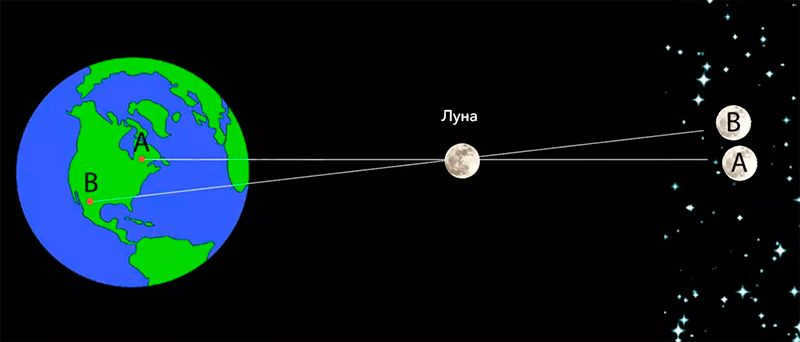
By utilizing the parallax technique to examine celestial entities, the backdrop of the night sky is considered to be unchanging due to the vast distances between the stars and our planet. In the early 1600s, the limited technology available prevented accurate measurements of the planets’ movements against the starry background from two separate observatories. However, the invention of the telescope in 1608 by the Italian scientist Galileo Galilei allowed for the magnification of celestial objects and the detection of the small displacements associated with parallax.
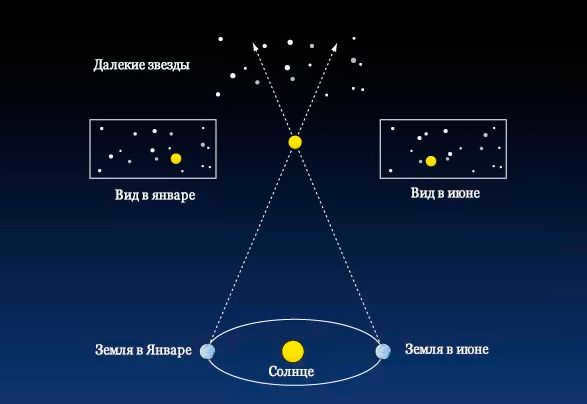
The parallax method is known for its relatively high precision in measuring distances. However, this method has limitations in its capabilities. It is effective in accurately calculating the distances to space objects that are close to our planet and the solar system. However, when it comes to determining distances that are farther away, challenges arise. In such cases, the accuracy of measurements decreases significantly since the diameter of the Earth’s orbit is not enough to create the necessary angle.
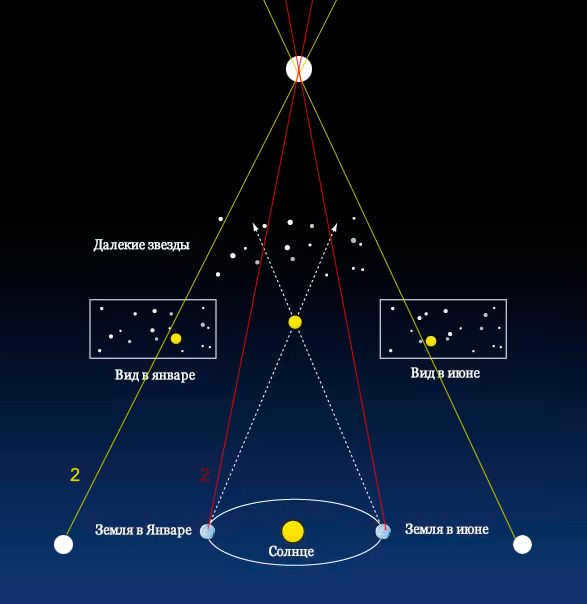
Radar astronomy: a unique branch of celestial studies
Radar astronomy serves as a distinct field within the realm of celestial studies, where in-depth examination of cosmic entities is conducted through the transmission of radio signals and analysis of their reflected echoes.
Throughout the research process, a comprehensive system comprising of a transmitter, antenna, and receiver – namely radar or radar – is strategically placed on our planet’s surface or deployed aboard a spacecraft. Unlike radio astronomy, radar astronomy diverges by focusing on the analysis of signals reflected from celestial bodies rather than their own radio emissions.
The technique is known for its convenience, as it allows for accurate distance calculations by measuring the time it takes for a signal to travel back and forth. Additionally, by analyzing the frequency changes of the signal, the speed of the object can be easily determined using the Doppler principle. However, due to the diminishing power of the reflected signal with increasing distance, radar has primarily been used to study celestial bodies within the solar system.
In 1961, scientists in England, the USSR, and the United States simultaneously utilized the position of Venus to calculate its distance. By conducting further experiments in 1964, they were able to significantly improve the accuracy of their measurements, reducing the margin of error to just a few kilometers. In addition to Venus, modern radar technology has also facilitated the localization of other celestial bodies such as the Sun, Mercury, Mars, Jupiter (including its Galilean satellites), Saturn (including its rings and the moon Titan), as well as asteroids and comet nuclei. Subsequently, space probes have been used to explore these celestial bodies. However, localization continues to be an effective method of astronomical research. A laser-based technique has also been employed to precisely determine the distance between Earth and the Moon, utilizing reflectors that emit optical pulses placed on the Moon’s surface. This method allows scientists to regularly measure the distance between the two objects with an accuracy of 1 centimeter, contributing to the study of their complex relative motion.
To transmit a signal from a ground-based transmitter through the Earth’s ionosphere, the wavelength must be sufficiently short, less than 20 meters. When a transmitter broadcasts a signal to an object, the power density of the signal decreases in proportion to the square of the distance. The signal is partially reflected by the object and upon returning to the Earth’s surface, it loses power again in proportion to the square of the distance. As a result, the energy of the received radio echo is inversely proportional to the fourth power of the distance to the object. This explains why radar methods are only applicable when studying nearby objects in the solar system and why powerful transmitters, large antennas, and ultra-sensitive receivers are needed.
How helpful did you find this article?

During this lesson, we will explore the fundamental aspects of astronomy. We will delve into the concept of the celestial sphere and examine its key lines, points, and planes. Additionally, we will familiarize ourselves with the horizontal coordinate system utilized in the field of astronomy.
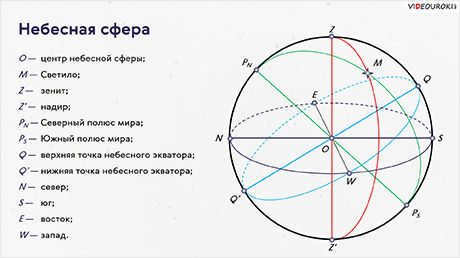
Unfortunately, it is currently not possible to view or distribute the educational video lesson among students.
In order to gain access to this lesson, as well as other video lessons in the curriculum, it is necessary to include it in your personal account.
Benefit from amazing functionalities


Outline of the lesson “Characteristics of astronomy and its techniques”
Astronomers have been observing the positions of celestial objects in the night sky and their relative movements for thousands of years. As a result, the geocentric system of the universe, proposed by Claudius Ptolemy in the 3rd century BC, dominated for a long time. This system placed the Earth at the center of the universe, with all other celestial bodies, including the Sun, orbiting around it.
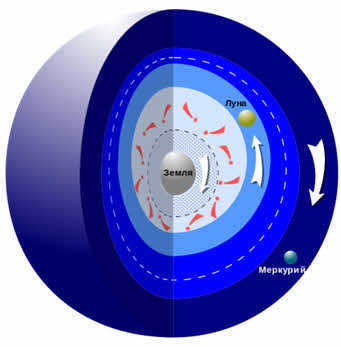
In 1543, a significant publication by Nicholas Copernicus was released, titled “On the Circulation of the Celestial Spheres”. This work presented the revolutionary idea that the Sun, not the Earth, is at the center of our solar system. Consequently, the heliocentric doctrine emerged, providing a fundamental understanding of the universe.
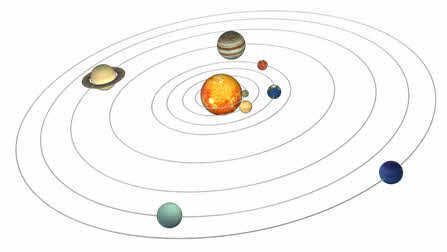
As you might have deduced, the primary method for researching celestial objects and occurrences is by means of astronomical observations. Astronomical observations encompass the intentional and dynamic documentation of data pertaining to processes and phenomena transpiring in the cosmos.
Throughout history and up until the present day, scientists have primarily relied on light and other forms of radiation emitted by celestial objects to gather information about what lies beyond Earth in outer space. This process of observations serves as the primary source of knowledge in the field of astronomy, distinguishing it from other natural sciences like physics or chemistry, which heavily rely on experimental methods. The ability to conduct experiments outside of Earth’s atmosphere only became possible with the advent of space exploration. However, even in these cases, experiments are conducted on a limited scale, such as analyzing the chemical composition of rocks from the Moon or Mars, or studying the surfaces of asteroids and comets. It is challenging to envision experiments on the scale of an entire planet, star, or galaxy.
The second characteristic of astronomy is that the majority of the phenomena being investigated are not directly observable. Even changes happening on the Sun are only detected on Earth after 8 minutes and 19 seconds (which is the time it takes for light to travel from the Sun to the Earth). When it comes to distant galaxies, we are talking about billions of years. In other words, when we examine distant star systems, we are examining their past.
Additionally, the third distinguishing feature of astronomy arises from the need to specify the position of celestial bodies in space (their coordinates) and the inability to determine which ones are closer to us and which ones are farther away. It appears to us, as well as to people in ancient times, that all stars are equidistant from us and exist on a spherical surface in the sky known as the celestial sphere, which rotates around the Earth as a whole.
Over 2000 years ago, astronomers began employing techniques to determine the position of any celestial body in relation to other cosmic objects or landmarks on Earth. Despite knowing that the celestial sphere is not a physical entity, the concept remains useful in present times.
Thus, the celestial sphere is a hypothetical sphere with an arbitrary radius, where the center is selected based on the problem at hand. For instance, the center of the celestial sphere may be chosen as the observer’s eye, the center of the Earth, the Sun, or any other relevant point in space.
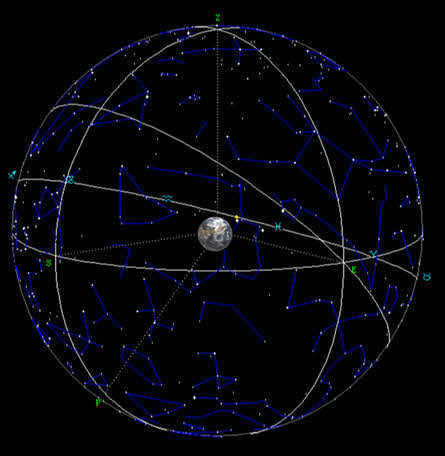
The projection of the apparent positions of all celestial objects onto the surface of the celestial sphere should be acknowledged as significant. Take, for instance, the stars comprising the “bucket” of the Big Dipper. Although they may be located at great distances from one another, when viewed from Earth, they appear to be projected onto the same region of the celestial sphere.
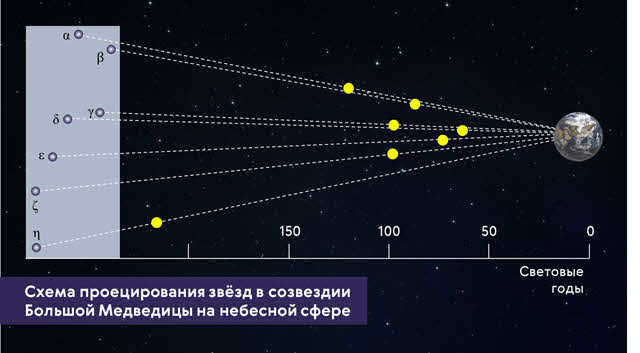
By repeating this process for all observed stars, we can create a star map on the surface of a sphere, also known as a celestial globe.
The distances between stars on the celestial sphere can only be measured in angular units. These angular distances are determined by the central angle between the lines connecting two stars, or they can be calculated based on the length of the arc between the stars on the celestial sphere’s surface.
To estimate angular distances in the sky, we can utilize the available data on stars in the constellation Ursa Major, commonly referred to as the Big Dipper.
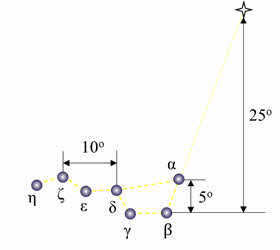
Another way to measure angular distances is by using the fingers on your hand, which you can stretch out in front of you.

The Sun and the Moon are the only two objects in the sky that appear as disks with similar angular sizes (about 30′ or 0.5 o ). The planets and stars, on the other hand, appear much smaller and are seen as luminous dots in the sky.
Now, let’s examine the main points, lines, and planes of the celestial sphere.
Therefore, a straight line passing through the center of the celestial sphere and aligning with the plumb line at the observation point is referred to as the plumb line or vertical line.
As depicted, this line intersects the celestial sphere at two points. The upper point is known as zenith and is represented by the letter Z. The lower point, which is the opposite of the zenith, is called nadir and is represented by the letter Z’.
The circle that passes through the zenith, the luminary, and the nadir on the celestial sphere is known as the circle of altitude, the vertical circle, or simply the vertical of the luminary.
Meanwhile, the straight line that runs through the center of the celestial sphere parallel to the Earth’s axis of rotation is referred to as the axis of the world.
This line also intersects the celestial sphere at two diametrically opposite points. The point near where Polaris is positioned is known as the North Pole of the world. On the other hand, the opposite point is called the South Pole of the world..
By tracing a large circle across the center of the sky sphere at a right angle to the axis of the Earth, we obtain the celestial equator. This line, much like the Earth’s equator, divides the sky sphere into two hemispheres: the Northern Hemisphere and the Southern Hemisphere.
If we trace a great circle through the poles of the Earth and the celestial body, we create the circle of celestial body declination.
The great circle of the sky sphere that passes through the zenith, nadir, and poles of the Earth is known as the celestial meridian. It is the celestial meridian.
As observed, the celestial meridian intersects with the true horizon at two points that are completely opposite to each other. The point that is in closer proximity to the North Pole of the world is referred to as the northern point. Likewise, the point that is closer to the South Pole of the world is known as the southern point.
By connecting these two points, we obtain what is commonly referred to as the noon line. The shadows of objects at noon fall in the direction of the noon line.
The true horizon also intersects with the celestial equator at two opposite points – the eastern point and the western point.
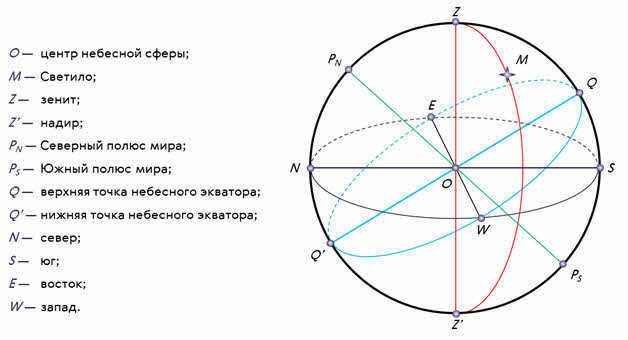
The arrangement of the celestial objects in the sky is determined by their relationship to the points and circles of the celestial sphere. To facilitate this, celestial coordinates, akin to geographical coordinates on Earth’s surface, have been introduced. Multiple coordinate systems are utilized in the field of astronomy. However, when it comes to astronomical observations, it is convenient to determine the position of a celestial object in relation to the horizon. In other words, it is important to know on which side of the horizon the object is located and how high it is positioned. To accomplish this, astronomy employs the horizontal coordinate system, which consists of the altitude or zenith distance and the azimuth.
The altitude of a celestial body (h) refers to the vertical angle between the horizon and the celestial body itself.
As the altitude is an angular measurement, it is typically expressed in degrees, minutes, or seconds. When a celestial body is above the horizon, its altitude ranges from 0 to 90 o up to the zenith. Conversely, if the celestial body is below the horizon, its altitude ranges from 0 to -90 o down to the nadir.
The zenith distance (z) is the arc length along a vertical circle from the zenith to the celestial body. It is measured from 0 to 180 o down to the nadir.
The azimuth represents the celestial body’s position relative to the cardinal directions of the horizon.
The azimuth is measured in degrees from the southern point in a clockwise direction, ranging from 0 to 360 o .
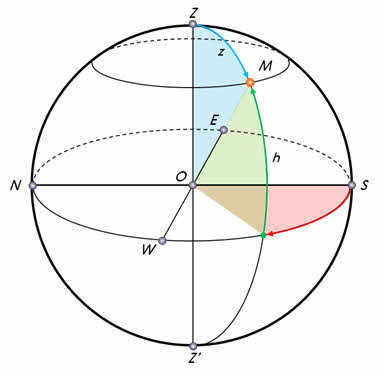
It is important to keep in mind that the values of these coordinates (azimuth, altitude, and zenith distance) are in a constant state of flux due to the daily rotation of the celestial sphere. Consequently, the horizontal coordinates serve as a representation of the luminary’s location in the sky at any given moment.
When it comes to practical application, this coordinate system is typically employed for determining the apparent positions of celestial bodies by means of optical angular measuring instruments, such as theodolites.

Astronomy, one of the oldest and most captivating scientific disciplines, delves into the study of celestial objects and phenomena. In our inaugural lesson, we will explore the nature of astronomy and its areas of focus. We will familiarize ourselves with the key characteristics of this field and delve into its historical evolution. Additionally, we will discuss the structure and vastness of the Universe.
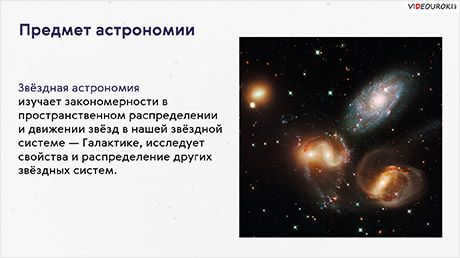
At present, it is not possible for you to watch or distribute this video tutorial to your students
In order to gain access to this and other video tutorials included in the package, you will have to include it in your personal account.
Unlock extraordinary possibilities



Outline of the lesson “Astronomy: The Study of the Universe”
Astronomy is a captivating and ancient scientific field that explores the various objects and phenomena observed in the vast expanse of the universe. Its roots can be traced back to the distant Stone Age, specifically from the sixth to the third millennium BC.
Throughout its rich history, humanity has continuously strived to comprehend the true nature of these observed celestial entities and phenomena, aiming to unravel the enigmatic mysteries of the world that surrounds us and ascertain our position within it.
In the early stages of civilization, numerous ancient cultures developed cosmological myths that narrated the gradual emergence of the cosmos, derived from the Greek word “order.” These myths depicted the creation of the heavens, earth, seas, rivers, plants, animals, and even humanity itself.
Throughout the ages, individuals have keenly observed and committed to memory the various occurrences taking place in the celestial realm. It transpired that alongside the alterations in the starry expanse and the apparent motion of the Sun, there were also recurring changes transpiring in the natural environment: the transition from day to night, the shift in seasons, and so forth. These developments held utmost importance for our ancient predecessors as they relied upon them to effectively carry out agricultural tasks in a timely manner and to provision for the winter months.
To put it differently, the consistent monitoring of celestial motion was necessitated by the practical exigencies of tracking time. The dependable periodicity exhibited by the Sun and Moon served as a catalyst for the establishment of fundamental temporal measures: the day, month, and year, thereby enabling individuals to predict the arrival of specific seasons throughout the year.
As an illustration, during Ancient Egypt, priests had the ability to forecast the spring floods of the Nile, which marked the start of agricultural activities, based on the sighting of the most radiant star – Sirius – in the pre-dawn sky.
In ancient Arabia, the observation of the moon’s phases held paramount significance, considering the scorching heat during the day, with the majority of work being performed at night.

And in nations with advanced navigation, great emphasis was placed on the techniques of celestial orientation.
Today, numerous ancient stone structures can be found around the world that are aligned with astronomically significant directions. These directions often correspond to the points where the sun rises and sets during the equinoxes and solstices. It is worth noting that such structures have been discovered in various parts of the globe. For instance, in Southern England, there is Stonehenge, while in the Southern Urals of Russia, one can find Arkaim. These ancient observatories are estimated to be around 5-6 thousand years old.
Gradually, the simple observation and naive interpretation of natural phenomena gave way to scientific exploration in an attempt to understand the causes behind these occurrences. The rapid development of philosophy as a natural science in ancient Greece during the sixth century BC made astronomy an essential part of human culture.
Interestingly, the term “astronomy” originates from the combination of two ancient Greek words: “astron” meaning star, and “nomos” meaning science.
In the present day, astronomy is recognized as a fundamental scientific discipline that investigates the structure, movement, origin, and evolution of celestial bodies, their systems, and the Universe as a whole.
It is worth mentioning that astronomy is one of the few sciences that has its own patron muse, Urania.

In the distant past, there has always been a strong correlation between the advancement of astronomy and mathematics. This connection can be traced back to ancient Greece, where the first accurate scientific concept that the Earth is a celestial object was established. It is interesting to note that one of the branches of mathematics, geometry, derives its name from the Greek word meaning “surveying”. In 240 B.C., the renowned scientist Eratosthenes, who hailed from Alexandria, utilized astronomical observations of the Sun’s elevation at noon to precisely calculate the dimensions of the planet.
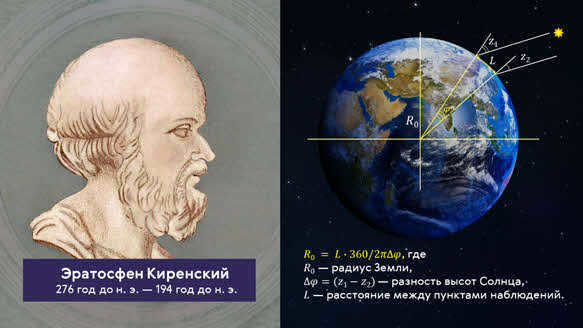
In astronomy, there is an interesting and unique division of the circle into 360 degrees. This tradition actually dates back to the geocentric system of Claudius Ptolemy, which was widely accepted from the 3rd century BC to the middle of the 16th century. According to this system, the Earth was believed to be at the center of the universe, with all other celestial bodies, including the Sun, revolving around it. It was believed that the Sun, in its daily rotation around the Earth, would move one degree at a time.
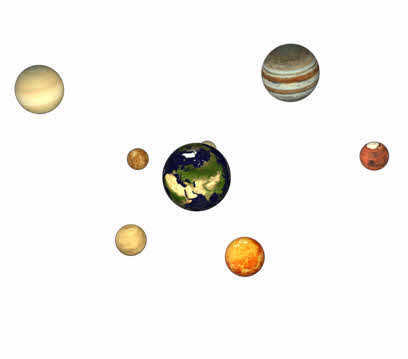
As trade and navigation progressed, the field of astronomy played a crucial role in aiding people’s ability to navigate through unfamiliar terrains and at sea, as well as accurately determining time. These practical applications led to the development of practical astronomy.
During the 16th and 17th centuries, some scientists began to challenge the geocentric model of the universe proposed by Ptolemy. One significant work that contributed to this shift was Nicholas Copernicus’ 1543 publication, “On the Revolutions of the Celestial Spheres,” in which he argued that the Sun, not the Earth, is the center of our system. This groundbreaking heliocentric doctrine provided a key to understanding the Universe.
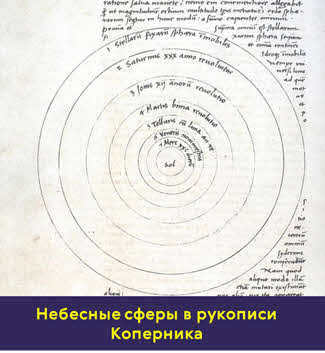
The study of the motion of celestial bodies and the necessity to predict their location had a significant impact on the development of mathematics and mechanics, a crucial branch of physics with practical applications. Astronomy, mathematics, and physics, which all originated from the same natural science – philosophy, have always maintained a strong connection. As a result, renowned scientists like Galileo Galilei and Isaac Newton are recognized for their contributions not only in physics but also in mathematics and astronomy.
Furthermore, Galileo Galilei, who constructed the first rudimentary telescope, provided undeniable evidence for the validity of Copernicus’ heliocentric theory through his observations and calculations.
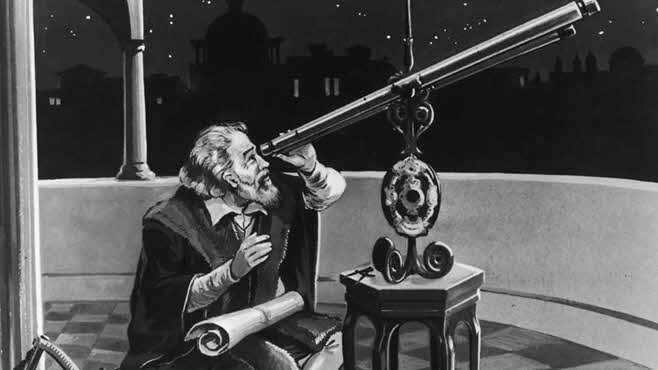
At the end of the XVII century, Newton formulated his renowned law of universal gravitation and discovered the potential application of mathematical methods to analyze the movement of celestial bodies, including planets, within the solar system.
Simultaneously, the well-known astronomer Johannes Kepler, while studying the trajectory of Mars and other celestial bodies, was able to establish three laws of planetary motion. These laws played a crucial role in shaping our understanding of the solar system’s structure.
The branch of astronomy dedicated to examining the movement of celestial bodies became known as celestial mechanics. This field not only provided explanations but also facilitated highly accurate calculations of observed movements within the solar system and the Galaxy. Consequently, astronomy emerged as a leading science during that era.
As time passed, the field of astronomy started to make use of more advanced telescopes. Galileo’s basic telescope was enhanced by Kepler and later by Huygens. In 1655, Huygens observed not only the rings of Saturn, but also made the discovery of its moon Titan.
In 1761, the renowned Russian scientist Mikhail Vasilyevich Lomonosov made the breakthrough discovery of Venus’ atmosphere and conducted extensive research on comets.

By taking the Earth as a point of reference, scientists conducted a comparison of other planets and satellites. This led to the emergence of a field known as comparative planetology.
In the early 19th century, there was a belief that the progress of astronomy had reached its limits. Auguste Comte, a French philosopher, expressed this idea by stating: “We may be able to determine the shapes, distances, sizes, and motions of celestial bodies, but their chemical composition will forever remain beyond our reach.”
The “verdict” was severe. However, in 1859, a duo of German scientists, Robert Bunsen and Gustav Kirchhoff, devised a technique for determining a substance’s chemical composition through its spectrum (spectral analysis). This breakthrough heralded the advent of a novel branch of physics – spectroscopy, which investigates the spectra of electromagnetic radiation. Moreover, the implementation of spectral analysis in the realm of astronomy inaugurated the widespread utilization of physics in exploring the nature of celestial bodies and catalyzed the emergence of a novel discipline within the realm of the Universe – astrophysics.
During the same period (approximately between 1837-1839), scientists in Russia, Germany, and England each independently made significant progress in measuring the distances to stars. This marked the beginning of a new field known as stellar astronomy, which focuses on investigating patterns in the distribution and movement of stars within our own galaxy, the Milky Way, as well as studying the characteristics and arrangement of other star systems.

Throughout history, astronomy has always had a profound impact on human civilization, but its most significant contribution lies in shaping our scientific worldview. This can be observed by examining the progress made in different branches of astronomy, which has always been closely intertwined with other scientific disciplines. For instance, the invention of atomic clocks, known for their remarkable precision of 10 -15 seconds, has enabled us to study the Earth’s rotational changes over the course of a year or longer, allowing for adjustments in our timekeeping systems.
The advancement of rocket technology has paved the way for humanity to venture into outer space, opening up new frontiers for exploration beyond our planet. This breakthrough has greatly expanded our ability to study celestial objects and has spurred a renewed interest in celestial mechanics. As a result, we are now able to calculate the trajectories of both unmanned and manned spacecraft with great accuracy, serving a wide range of purposes.
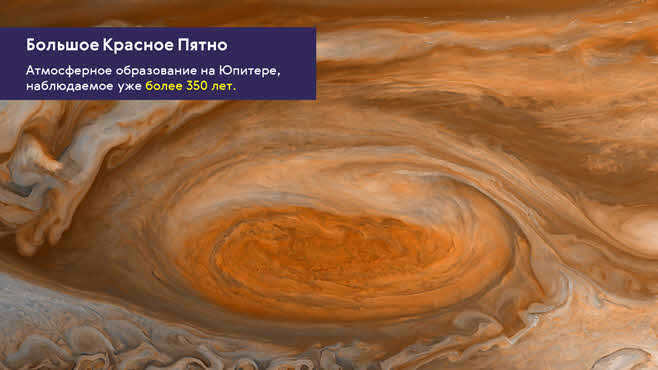
The advancement of astrophysics in recent times has spurred the development of cutting-edge technologies. For instance, the exploration of the Sun and other stars’ energy sources has sparked the concept of creating controlled thermonuclear reactors. Similarly, the investigation of solar prominences has led to the idea of using a magnetic field to insulate superheated plasma and the invention of magnetohydrodynamic generators.
This demonstrates the interdependency between astronomy and physics and how it has proven effective in addressing numerous issues that concern humanity. It is therefore no coincidence that, in the early years of the 21st century, three Nobel Prizes in Physics were awarded to scientists for their astrophysics and cosmology research.
You are already aware that the Sun, the Earth, the Moon, and other celestial bodies such as planets, satellites, dwarf planets, and comets all revolve around one another in our solar system. This collective movement creates the structure we know as the solar system. However, the Sun is not stationary either. It, along with billions of other stars, orbits around the center of our expansive star system, known as the Milky Way Galaxy. The star closest to our solar system is situated at such a vast distance that it takes over four years for light to travel from it to reach the Earth. Furthermore, the Milky Way Galaxy spans such a vast expanse that light can traverse its entirety in approximately 100,000 years.
Nevertheless, the universe extends beyond our galaxy. There exist billions of other star systems. In fact, light from the farthest known galaxies takes over 13 billion years to reach the Earth.
As humanity enters the era of space exploration and gears up for interplanetary flights, it must not overlook the importance of its home planet, Earth. Earth is an exceptional planet that has nurtured and fostered human civilization. With the Earth’s unparalleled natural beauty and resources, the responsibility to preserve and protect it falls heavily on mankind.

Currently, there are additional cumulative discounts (ranging from 2% to 25%) available to 58,741 educational establishments. To discover the specific discount applicable to all staff members of your educational institution, please access your personal Infoworks account.




Professional development course
Fundamentals of crisis psychology
We can apply the discount from your educational institution to this offer (the amount depends on the number of your colleagues who have completed Infowork courses).
Currently, there are 58,741 eligible educational institutions for additional cumulative discounts (ranging from 2% to 25%). To find out the specific discount applicable to all employees of your educational institution, please log in to your personal Infoworks account.


Professional development training
Utilizing interactive educational platforms with a focus on the Moodle platform
We can include your educational institution’s discount along with this promotion (the amount depends on the number of your colleagues who have completed Infowork courses).
Currently, 58,741 educational institutions are eligible for additional discounts ranging from 2% to 25%. To determine the discount available for all staff members at your educational institution, please log in to your personal Infoworks account.


Getting Ready for the Literature USE. The Creative Legacy of I. S. Turgenev
Explanation of the Presentation through Individual Slides:

Slide 2: Astronomy is a scientific discipline that explores the universe, investigating the arrangement, movement, creation, and evolution of celestial entities and their interconnected systems.


Slide 3 Astronomy (derived from the Greek words astron* and nomos**)
Astron* refers to “star” and nomos** refers to “law”

Slide 4: Astronomy was established as a scientific discipline during the period from the 6th to the 3rd millennium BC. It stands as the oldest of all the natural sciences.

Slide 5: The primary goals of astronomy include:
1. Investigating the visible and subsequent actual positions and movements of celestial bodies in space, as well as determining their size and shape.
2. Exploring the structure of celestial bodies, analyzing their chemical composition and physical properties (such as density and temperature).
3. Addressing the origins and evolution of individual celestial bodies and the systems they form.
4. Examining the fundamental properties of the Universe and developing a theory regarding the observable portion of the Universe.


Slide number 6 illustrates the close relationship between Astronomy and various other disciplines, such as Mathematics, Physics, Geography, Chemistry, Biology, History, Literature, and Philosophy.


Slide 7: Unique Aspects of Astronomy and its Techniques
Observations serve as the primary means of gathering information in the field of astronomy.
Conducting experiments or tests under terrestrial conditions is not feasible.
Many astronomical phenomena have significant durations, ranging from hundreds to millions and billions of years.
There is a need to determine the coordinates of celestial bodies in space, as well as the inability to discern their proximity or distance from us.

Slide 8: Astronomy and Astrology
Astrology encompasses a collection of descriptive and predictive practices, traditions, and beliefs that propose the impact of celestial bodies on the world and human beings. This impact extends to temperament, character, actions, and destiny, allowing for future predictions based on the movement and position of celestial bodies on the celestial sphere and in relation to each other.
On the other hand, Astronomy focuses on the scientific study of the universe and all its objects. Unlike Astronomy, Astrology lacks statistical evidence and is considered a pseudoscientific belief.
However, it is the human fascination with the potential influence of celestial objects on individuals that sparked the development of Astronomy as a legitimate scientific discipline.

Slide 9: Over 2000 years ago, astronomers started utilizing techniques that enabled them to determine the position of celestial bodies in relation to other cosmic objects or earthly landmarks.
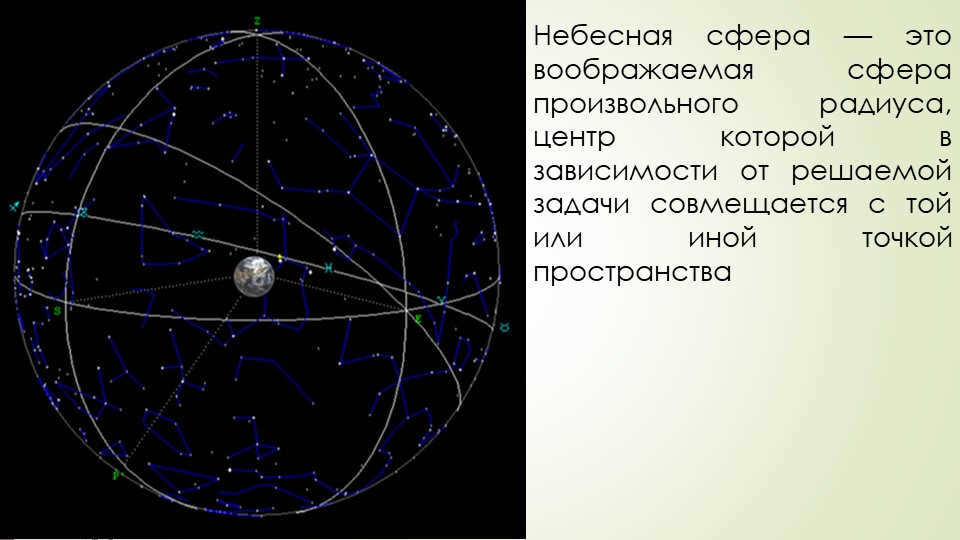
Slide 10: The celestial sphere is a hypothetical sphere of any size, with its center aligned to a specific point in space depending on the specific problem that needs to be addressed.
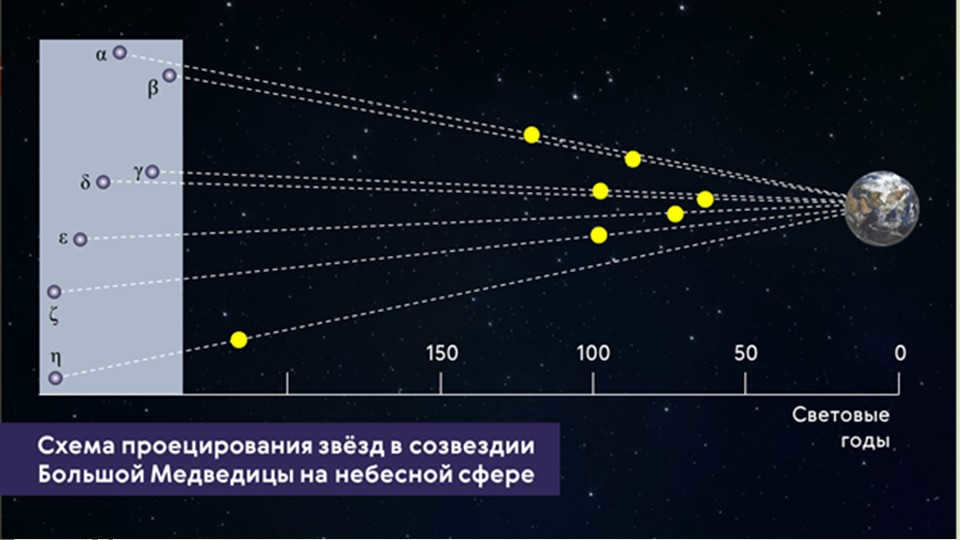
There are 12 units of distances in astronomy:
1. The astronomical unit (a.u.) is the average distance of the Earth from the Sun. It is equal to 149,600,000 km.
2. The parsec (ps) is the distance corresponding to an annual parallax of 1″.
3. The light-year is the distance that light travels in one year, propagating at a speed of about 300,000 km/sec.
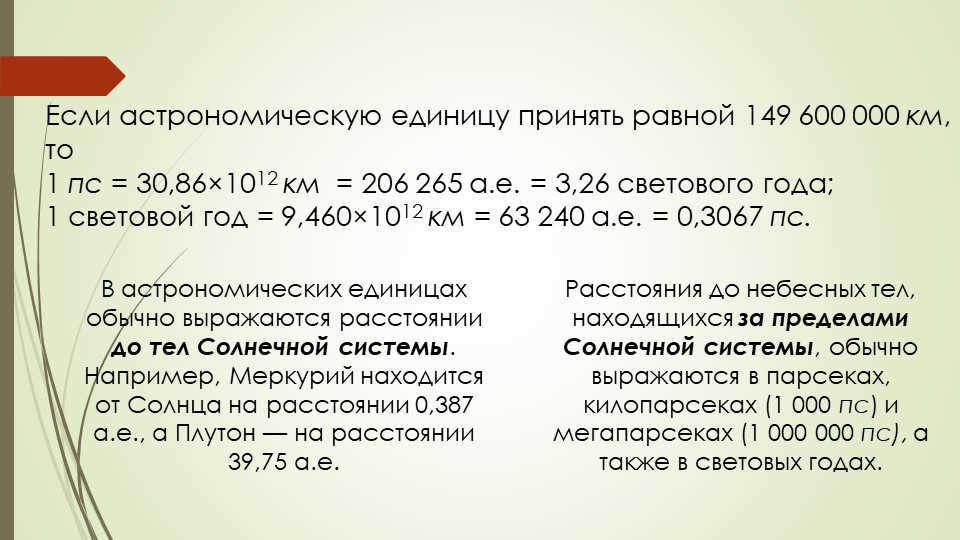
On the 13th slide, if we consider the astronomical unit to be 149,600,000 km, then 1 ps is equivalent to 30.86×1012 km, which is equal to 206,265 a.u. or 3.26 light-years. Similarly, 1 light-year is equal to 9.460×1012 km, 63,240 a.u., or 0.3067 ps.
Astronomical units are commonly used to express distances to celestial bodies within the solar system. For instance, Mercury is located 0.387 a.u. away from the Sun, while Pluto is situated 39.75 a.u. away.
Distances to celestial bodies outside the solar system are typically expressed in parsecs, kiloparsecs (1,000 ps), megaparsecs (1,000,000 ps), and light-years.
Astronomy is a fundamental scientific discipline that investigates the structure, motion, origin, and evolution of celestial bodies, their systems, and the universe as a whole. It is an important field of human activity, providing a comprehensive understanding of the patterns in natural development.
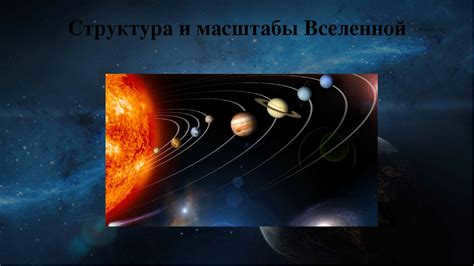
Content
- Why is astronomy considered a fundamental science?
- What are the distinguishing characteristics of astronomy as a scientific field?
- How does astronomy differ from astrology?
- What does the study of astronomy entail?
- What is the significance of fundamental astronomy?
- Why is astrology not recognized as a legitimate science?
- What practical applications does astronomy have?
- Astrometry.
- Celestial mechanics.
- Theoretical astronomy.
- Astrophysics.
- Stellar astronomy.
- Cosmochemistry.
- Cosmogony.
- Cosmology.
Why is astronomy considered a fundamental science?
Astronomy, as a fundamental science, examines the structure, movement, origin, and development of celestial bodies, their systems, and the universe as a whole. It plays a significant role in human understanding by providing a systematic knowledge of the patterns in the natural world.
What area of astronomy focuses on the movement of celestial bodies in outer space?
Stellar astronomy is the branch of astronomy that studies the distribution and motion of stars, stellar systems, and interstellar matter, while also considering their physical characteristics. Cosmogony, on the other hand, explores the origin and evolution of celestial bodies, including our own planet Earth.
Which element was initially discovered through astronomical observations?
The element helium was first observed on the Sun before its discovery on Earth.
The universe is believed to be timeless, while its individual components – such as the Earth, other planets, the Sun, and stars – are in a constant state of transformation and progression, guided by intricate laws that are explored by the field of astronomy. Astronomy encompasses a collection of disciplines that investigate the motion, structure, origin, and evolution of cosmic entities and their interconnected systems.
What are the objectives of astronomy?
The primary objectives of astronomy include examining the apparent and actual positions and motions of celestial bodies in space, as well as determining their dimensions and forms. Additionally, astronomy delves into the makeup and physical properties (such as density and temperature) of celestial bodies.
Astronomy distinguishes itself from other sciences due to its reliance on observation rather than experimental research. The field of astronomy focuses on studying the largest objects in the universe, including planets, stars, nebulae, quasars, galaxies, galaxy clusters, and the incredibly long processes that span millions and billions of years.
What are the different branches of astronomy?
What is the foundation of astronomy?
The foundation of astronomy lies in observation. Through careful observations, we are able to gather the essential facts that enable us to explain various astronomical phenomena.
Answers1. The field of study that examines different celestial objects such as stars, planets, and comets is known as astronomy. Individuals who engage in this scientific discipline are referred to as astronomers.
What sets astronomy apart from astrology?
What distinguishes astronomy from astrology on Brainly? Answer: Astronomy focuses on the physical interactions among celestial bodies and the accompanying phenomena, while astrology aims to comprehend the motion of stars and its impact on individuals.
ASTRONOMY is the field of study that focuses on celestial objects (including planets, asteroids, comets, stars, galaxies, etc.). Astronomy also explores the entirety of these celestial objects and the space that exists between them, known as the universe.
What is the current significance of astronomy?
In today’s world, astronomy is crucial for advancing research and technological development. Additionally, it helps us understand the potential for life to exist in other environments. Throughout history, astronomy has also played a key role in explaining natural phenomena such as day and night, seasons, and directions.
Why is astronomy important?
Astronomy holds immense significance as it is the science that investigates the universe, including the positioning, movement, structure, origin, and evolution of celestial bodies and systems. It also encompasses specialized branches such as Antarctic astronomy, which focuses on astronomical observations and research conducted in the Antarctic region.
Astronomy, derived from the Greek words “astron” meaning star and “nomos” meaning law, is the scientific discipline that investigates the position, composition, characteristics, genesis, and evolution of celestial entities and their systems, encompassing the entire universe. Specifically, astronomy explores the Sun, planets, and minor bodies within our solar system, as well as stars, nebulae, galaxies, black holes, and a multitude of other cosmic phenomena.
What does the field of astronomy focus on? Select the most comprehensive answer.
The field of astronomy examines the history, origin, movement, and structure of celestial bodies, encompassing all aspects related to space, other planets, interstellar regions, and galaxies.
The field of astrometry, known as fundamental astrometry, focuses on establishing the most precise and accurately defined celestial coordinate system. This system, known as the equatorial system, is essential for studying the positions and movements of celestial bodies and man-made objects in space. It also plays a crucial role in geodetic research.
Which scientific disciplines does astronomy fall under?
Astronomy is considered a natural science, which encompasses the study of the laws and phenomena of the universe.
Why was astronomy no longer taught in schools?
By the end of the Soviet Union, the teaching of astronomy in schools had significantly declined due to the country’s economic situation and lack of funding. In 1993, astronomy was removed from the list of mandatory subjects in Russian schools, leading to its discontinuation.
As scientific knowledge has advanced, the scientific community has become increasingly convinced that astrology is not based on factual evidence. The reason astrology is considered a pseudoscience is because its methods do not align with the rigorous methodology of modern science. Astrology is often classified as a form of superstition, pseudo-scientific teachings, and even as a type of fortune-telling magic.
What is the main approach used in the study of astronomy?
– The primary methods employed in astronomical research include visual observations, photography, photometry, spectroscopy, and more.
What is the scientific discipline focused on the study of celestial bodies called?
The scientific discipline that investigates celestial bodies is known as astronomy. Astronomers analyze the position, characteristics, and movement of these celestial objects. Astronomy encompasses the study of planets, their satellites, stars, comets, and the vast expanse of interstellar space.
Astronomy plays a crucial role in combating idealism, religion, mysticism, and dogmatism. Its significance in shaping a proper dialectical-materialist perspective is immense, as it defines the Earth’s position and our place as human beings in the vast universe.
Did our responses prove helpful?
Trending in the past 24 hours

What are the typical inquiries one might pose to an astrologer?
These might involve interpreting the natal chart and receiving a prediction for the upcoming year. The reading of the natal chart is highly sought after.

What is the price of a consultation with a Vedic astrologer?
One question – You have the opportunity to ask one question, any question that intrigues you, and it will be thoroughly examined.
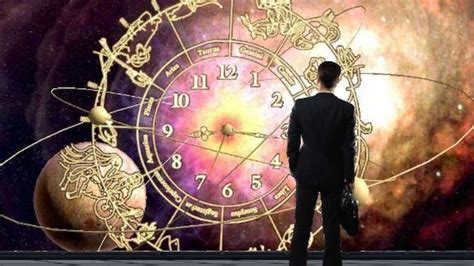
Astrology is an ancient discipline that explores the celestial bodies and seeks to forecast future events.

What is the purpose of examining the natal chart?
First and foremost, the natal chart based on the date of birth is used to generate an astrological profile of an individual.

What is the purpose of the houses in the natal chart?
The houses within an astrological chart symbolize various facets of your life based on specific times and locations.

What occurs when an individual experiences the feeling of love?
When love is felt, a small section of the brain known as the ventral tegmental area becomes stimulated.

What words can be used to depict the feeling of falling in love?
The signs of falling in love resemble those of being sick: perspiring hands, lack of desire to eat, a sense of euphoria, and blushing.

The Ascendant (also known as Asc or Ascendant sign) represents the eastern point of the horoscope, which corresponds to the zodiac sign that was rising on the horizon at the precise moment of your birth.

What causes us to develop feelings for someone?
There are numerous factors that contribute to falling in love with a specific individual, and they extend beyond mere physical resemblances or pleasant scents.


